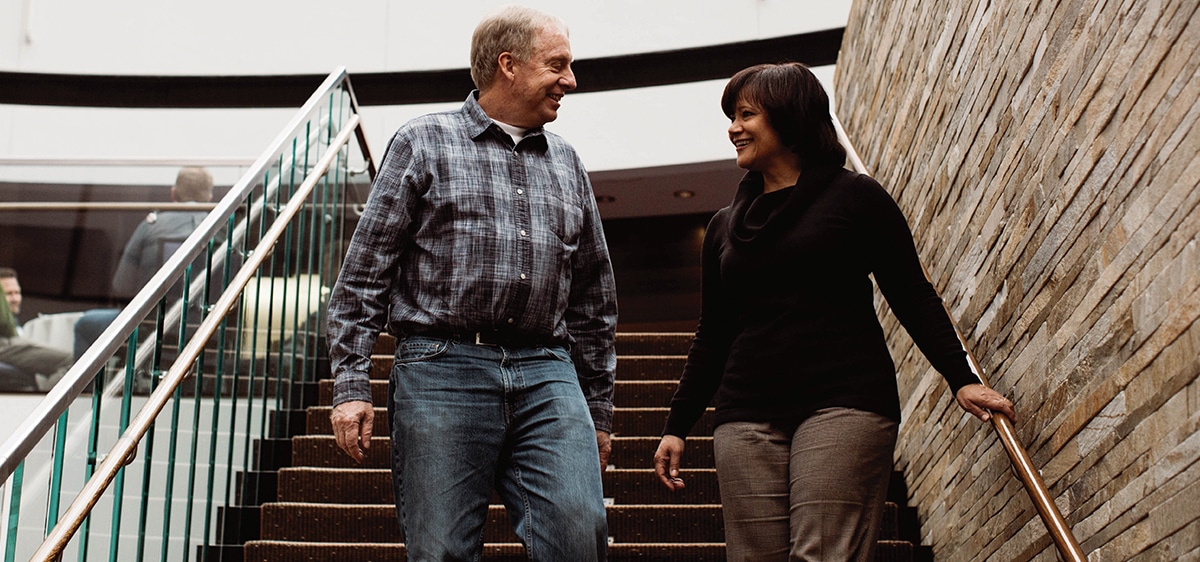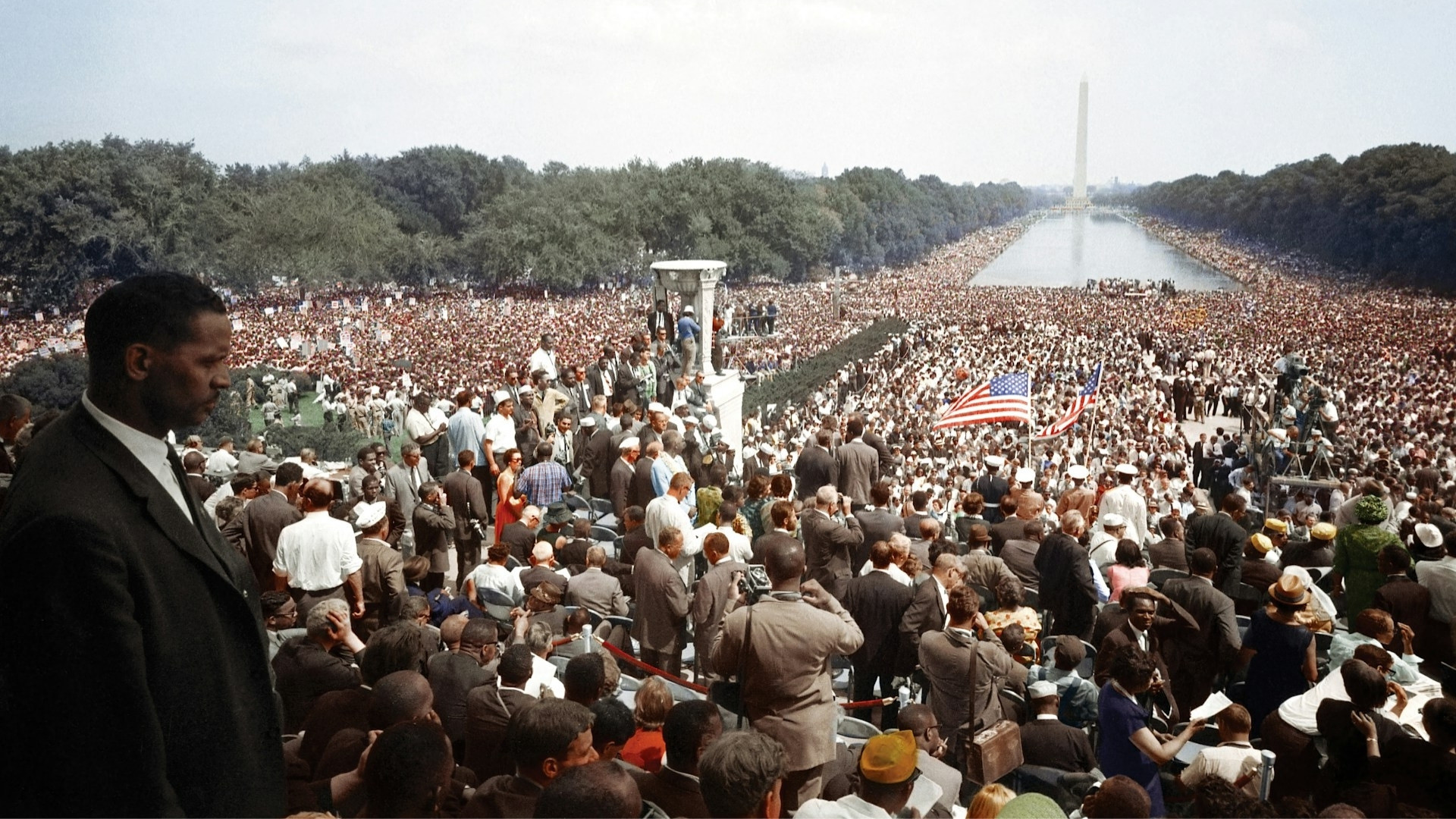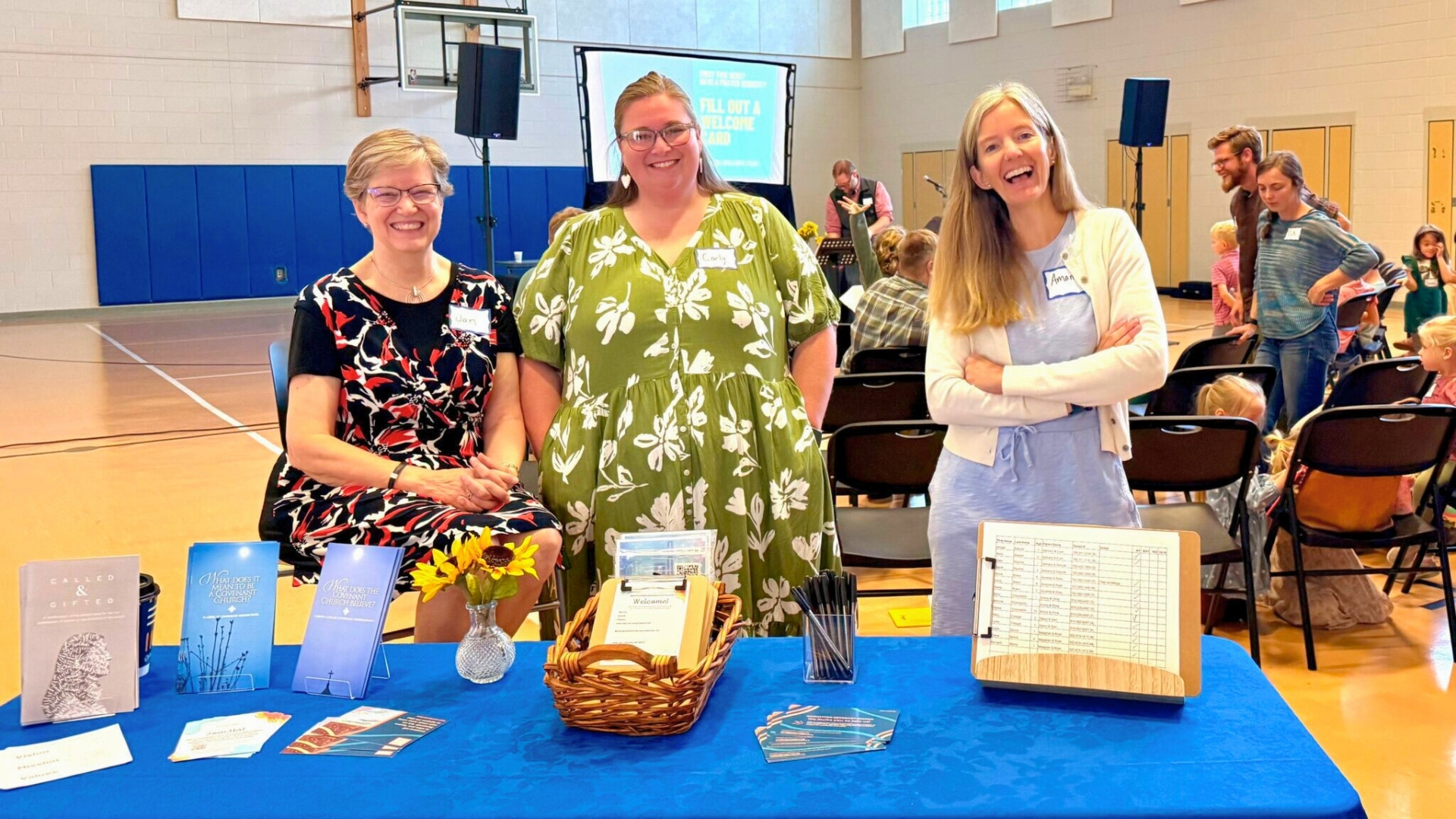[vc_row][vc_column][vc_column_text]

[/vc_column_text][/vc_column][/vc_row][vc_row el_class=”hero-header-text”][vc_column][vc_column_text]
The Help Network
A Conversation with Cecilia Williams & Dave Husby
March 13, 2018
[/vc_column_text][/vc_column][/vc_row][vc_row][vc_column][vc_column_text]
Recent natural disasters leave us all wondering how to help. The Companion asked Cecilia Williams, executive minister of Love Mercy Do Justice, and Dave Husby, director of Covenant World Relief, to answer questions about disaster response, donor fatigue, and long-term recovery plans.
[/vc_column_text][vc_column_text]This story is Part three of the Disaster Relief series. Click here to view additional stories.[/vc_column_text][/vc_column][/vc_row][vc_row][vc_column][vc_column_text]
Love Mercy Do Justice and Covenant World Relief are now partnering in disaster response. What does this look like?
Dave Husby: LMDJ is taking the lead in disaster readiness and response in the United States and Canada. In addition to our primary focus on long-term transformational development and disaster response with international partners, CWR continues to collaborate and cooperate with LMDJ. During the major hurricanes, fires, and mudslides this past year, LMDJ and CWR staff met regularly to determine strategy and partnership opportunities.
Cecilia Williams: Collaboration has included financial partnership, sharing information, leveraging resources, and working together to identify best practices for responding in times of crisis and disaster, both domestically and internationally. There are transferrable principles that transcend context. LMDJ wants to build on the significant and treasured history of CWR as it has responded and continues to respond to disasters around the world. Both of our missions include a desire to get the most help to the most vulnerable as soon as possible—the un- or underinsured, the elderly, disabled, and the poorest in the community.
How does the Covenant respond to disasters?
Cecilia: LMDJ works primarily through regional conferences and local Covenant churches and their partners on the ground. A good example of this is the relationship the Midsouth Conference developed in Houston with Pastor John Parks and his team at Ashford Community Church. This church became a staging area for the Covenant’s Merge Ministries, which has been coordinating work teams heading into Houston to serve.
Another example includes our partnership with NaLEC (the National Latino Evangelical Coalition), which is working to bring relief on the island of Puerto Rico. Through Promised Land Covenant Church in the Bronx, New York, and its pastor, Michael Carrion, we have been able to offer relief and a spiritual response both on the island and to the many domestic refugees who are settling here on the mainland.
Following a major disaster, the vast majority of funds are given within the first month or two. However, long-term recovery continues long after the media stops reporting on the disaster.
Dave: CWR is blessed to work with several local partners around the world that have made disaster readiness and response a priority for their ministries. In recent years, we have placed increased emphasis on seeking to assist our partners in building their capacity in disaster response.
How do we respond to disasters when we don’t have Covenant connections or partners?
Cecilia: When Covenant churches are centered in affected areas, LMDJ can respond quickly. The response is swifter still when churches are connected with networks and partnering organizations with whom they can collaborate. It is more difficult to respond where there are no Covenant churches. Relational connections on the ground and with organizations like NaLEC become key in such situations, as evidenced in our response to Hurricane Maria. We look for trusted organizations and “friends of the Covenant” that have a demonstrated ability to connect and move assistance to the place of greatest need quickly.
Dave: CWR only responds to disasters where there are existing partners that have the capacity to respond. We were not able to respond at first to the current Rohingya refugee crisis because we had no partners working with them. We later received word from both World Relief and Medical Teams International that they had begun to work in the refugee camps, so we were able to respond with both organizations. We had worked with WR and MTI following the 2015 earthquake in Nepal, and then expanded our response with two local organizations that became CWR partners. Now we are working with those local Nepalese partners in long-term recovery and community development.
[/vc_column_text][/vc_column][/vc_row][vc_row][vc_column][vc_column_text]
Both of our missions include a desire to get the most help to the most vulnerable as soon as possible.
[/vc_column_text][/vc_column][/vc_row][vc_row][vc_column][vc_column_text]What does it mean to say we are committed to long-term recovery? Is that work sustainable?

Dave: In a disaster, there is a need for immediate relief work to provide food, water, clothing, and medical care. Following that initial phase is a transition to long-term recovery work. Depending on the severity of the disaster, this often requires years of engagement. Recovery includes rebuilding homes and other infrastructure, providing spiritual and psycho-social care, vocational training, micro-loans, clean water and sanitation, and community health.
A big challenge for us is to keep Covenanters aware of the long-term recovery programs and encourage them to continue giving. Following a major disaster, the vast majority of funds are given within the first month or two. However, long-term recovery continues long after the media stops reporting on the disaster At present, CWR is engaged with the Covenant Church of Ecuador in an excellent long-term recovery program that helps families affected by the 2015 earthquake to start small businesses. We want to continue there as long as funds are available.
Cecilia: National and state VOAD organizations (Volunteer Organizations Active in Disaster) have taught us four valuable principles for sustaining a response: communication, cooperation, coordination, and collaboration. Such organizations teach us the importance of emergency management protocols, long-term recovery teams, and unmet needs committees. This is precisely why partnerships are key. We have had the privilege of working together with World Renew, the Mennonite Disaster Response, World Vision, World Relief, and others who are committed to staying with communities affected by disaster for the long haul.
The biggest sustainability asset, however, can be the local church that is committed to remaining meaningful and missional in its partnership with affected communities as a help, a hope, and a light. Such leads to good neighboring, effective ongoing outreach, and sustained response.
What kind of accountability practices do you build into your partnerships? How do you track how donations are being used?
Cecilia: When a disaster occurs, CWR and LMDJ partners submit a Disaster Relief Grant application. These are quickly reviewed and approved by the CWR/LMDJ disaster response committee. When our partners, Covenant conferences, and/or local churches use the grants, they submit narrative and financial reports. When possible, CWR and/or LMDJ staff visit the sites to observe the relief and recovery work. The Covenant’s finance and advancement offices assist in tracking donor response, receipting, and providing donor care.
What have you learned about what not to do in the wake of a disaster? What can be unintended consequences of good intentions?
Dave: Immediately following a disaster, it is important to carefully assess the situation. Do we have partners on the ground? What other organizations are responding and what are they doing? How might we work together? Collaborative responses reduce the likelihood of duplicating services. In general, it is far better to send cash donations than in-kind donations, removing the time and expense of shipping materials and allowing organizations to use the donation where it’s most needed. After Hurricane Katrina, most of the donated used clothing ended up being buried as garbage—the sheer volume overwhelmed volunteers, and much of it did not meet the needs of the community. Also, when it’s possible to do so, buying relief supplies in the affected community (rather than sending them there) stimulates the local economy.
Cecilia: In addition to stimulating the local economy, we must carefully avoid draining what few precious resources may be available by taking teams too soon in the immediate aftermath of disaster. These include gas, food, and even lodging needed to provide shelter for the displaced. We have also learned that cultural competence is essential in the disaster zone. Awareness, sensitivity, and the ability to communicate and serve across cultural boundaries is critical. Finally, the church’s response must be measured and well-timed. In one case, when a church rushed in too soon and began working before FEMA and other agencies assessed the damage, desperately needed federal emergency response funds to help rebuild homes and small business were denied. The church should leverage its work alongside the wider response of FEMA, insurance providers, and other involved NPOs.
When is it appropriate for volunteers to go to the site of a disaster to help?
Dave: We encourage people to wait to be invited by a reputable organization that is collaborating and coordinating with others. In the response after the tornadoes in Moore, Oklahoma, so many SUVs—spontaneous uninvited volunteers—showed up that roads were clogged, and many ended up staying in motels and hotels that were desperately needed for those who had lost their homes.
Cecilia: Coordination with people on the ground is essential. Often churches will want to respond on-site as soon as possible; however, the best approach is always to coordinate response with organizations active in the area who have completed critical assessments and determined the most immediate points of need.
[/vc_column_text][/vc_column][/vc_row]














